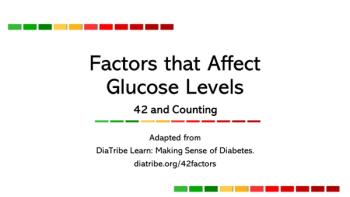
ASH: Investigational Agent Prevents DVT
ORLANDO -- For preventing recurrent DVT, once-weekly idraparinux, an investigational synthetic oligosaccharide, was comparable to the combination of low-molecular-weight heparin and a daily vitamin K antagonist, Dutch researchers reported here.
ORLANDO, Dec. 13 -- Once-weekly idraparinux, an investigational synthetic oligosaccharide, is comparable to low-molecular-weight heparin and a daily vitamin K antagonist at preventing recurrent deep vein thrombosis, reported Dutch researchers.
Among nearly 3,000 patients with DVT randomized to treatment with once-weekly indraparinux or low-molecular weight heparin/unfractionated heparin followed by a vitamin K antagonist, (such as Coumadin [warfarin]), about 3% of patients in each group had a recurrent thrombotic event, found Harry Buller, M.D., of the Academic Medical Center in Amsterdam, and colleagues.
On the other hand, idraparinux was associated with about twice the risk for recurrent venous thromboembolism in patients who have had pulmonary embolism, a finding that took the investigators aback, said Dr. Buller at the American Society of Hematology meeting here.
"What is the big surprise here is the very low rate [of thromboembolism] in the comparator arm," said Dr. Buller. For DVT a weekly injection with this agent is an alternative to heparin followed by vitamin K antagonism, "but for pulmonary embolism we've started a new study to get a better answer."
Idraparinux is a synthetic agent that binds to antithrombin, resulting in inhibition of factor Xa, thereby preventing the conversion of fibrinogen into fibrin clots.
Dr. Buller and colleagues in the van Gogh study conducted two randomized open-label trials comparing idraparinux with standard therapy for preventing new episodes of venous thromboembolism in patients with deep vein thrombosis (2,904 patients) and in patients with pulmonary embolism (2,215 patients).
Patients were randomized to receive idraparinux at 2.5 mg once weekly via subcutaneous injection, or to low-molecular-weight heparin/unfractionated heparin with adjusted-dose vitamin K antagonists, for either three or six months.
The design of both trials was to show non-inferiority for idraparinux compared with standard therapy. The primary efficacy outcome was the three-month incidence of symptomatic recurrent fatal or nonfatal venous thromboembolism (DVT and pulmonary embolism).
They found that in the study of patients with DVT, the incidence of recurrence at day 92 was nearly identical between the groups, at 2.9% for idraparinux and 3.0% for standard therapy.
In contrast, the incidence of recurrent thromboembolism in patients with pulmonary embolism was 3.4% at three months for patients on idraparinux, versus 1.6% for those on conventional therapy.
In the combined studies the occurrence of any bleeding, the primary safety outcome, was lower with idraparinux than with heparin/vitamin K antagonism, at 4.5% vs. 7.0%, respectively (chi-square test, P=0.004). Major bleeding occurred in 0.8% of patients on idraparinux, compared with 1.2% of patients on standard therapy; this difference was not statistically significant (P=0.351).
By six months, the episodes of any bleeding and major bleeding were similar between the two groups, at 8.3% and 1.9% for idraparinux, and 8.1% and 1.5% for heparin/vitamin K antagonism.
"Although the results for idraparinux in the pulmonary embolism group were surprising and disappointing, for patients with deep vein thrombosis our findings should have a remarkable impact," Dr. Buller said. "The fact that once-a-week injections of idraparinux are just as effective and safe as traditional treatment frees patients with DVT from the daily injection and continuous monitoring that would otherwise be required."
The study was supported by Sanofi-Aventis, makers of idraparinux. Dr. Buller receives support from Bristol Myers Squibb and Bayer for clinical trials evaluating new antithrombotics, and is an invited speaker.
Newsletter
Enhance your clinical practice with the Patient Care newsletter, offering the latest evidence-based guidelines, diagnostic insights, and treatment strategies for primary care physicians.

































































































































































































































































































